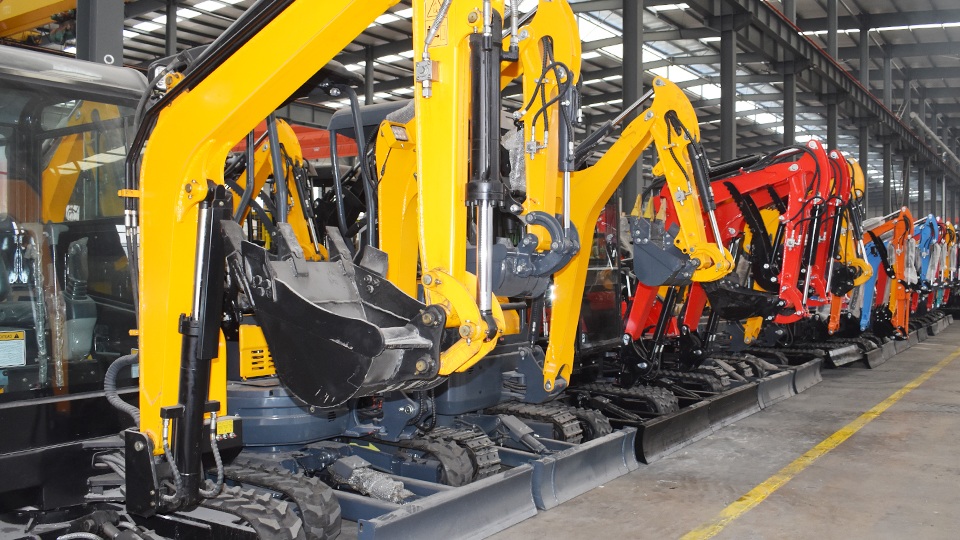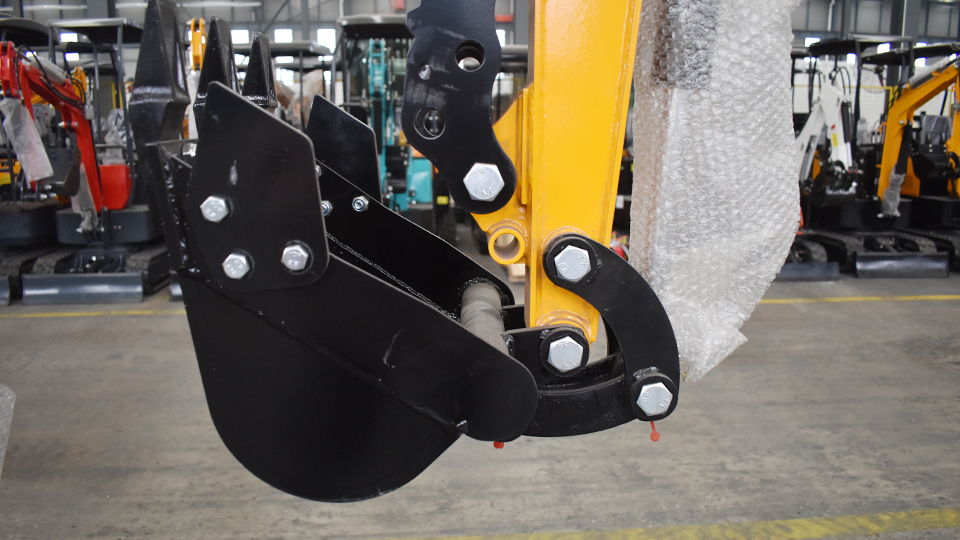Excavating Longevity: Essential Maintenance Tips to Extend the Life of Your Machine
Excavators are the heavy-hitting titans of the construction, mining, and demolition industries. Their versatility and power are indispensable for a vast array of tasks, representing a significant capital investment for any operation. Maximizing the lifespan of an excavator is not merely about delaying replacement; it's about optimizing operational efficiency, reducing downtime, minimizing repair costs, and ultimately bolstering profitability. This technical article delves into the essential maintenance practices that, when diligently implemented, can significantly extend the working life and enhance the performance of your excavator.
The Foundation: Understanding Excavator Systems and Their Vulnerabilities
Before exploring specific maintenance tips, it's crucial to understand the complex interplay of systems within an excavator and the areas most susceptible to wear and tear. An excavator comprises several critical systems:
Engine: The power source, typically a robust diesel engine, responsible for driving the hydraulic pump and other auxiliary systems. It's subject to wear from combustion, friction, and heat.
Hydraulic System: The lifeblood of the excavator, consisting of pumps, motors, cylinders, valves, and hoses that transmit power to the boom, arm, bucket, and swing functions. This system is vulnerable to contamination, leaks, and component fatigue.
Undercarriage: The foundation of mobility, comprising tracks (or wheels), rollers, idlers, sprockets, and the track chain. This system bears the weight of the machine and endures constant abrasion and impact.
Swing System: Enables the upper structure to rotate, consisting of a swing motor, gearbox, and slew ring bearing. This system experiences significant stress during repetitive rotational movements.
Cooling System: Regulates the engine and hydraulic oil temperatures, preventing overheating and maintaining optimal operating viscosity. This system is susceptible to blockages, leaks, and corrosion.

Filtration Systems: Critical for maintaining the cleanliness of engine oil, hydraulic fluid, and air intake, preventing premature wear and damage to sensitive components.
Lubrication System: Reduces friction and wear between moving parts through manual or automatic greasing of pins, bushings, and bearings.
Operator Station: While not a primary mechanical system, its proper maintenance ensures operator comfort, safety, and efficient control of the machine.
Understanding the function and potential failure points of each system is the first step towards implementing effective preventative maintenance.
Daily Rituals: The First Line of Defense
Consistent daily checks and basic maintenance tasks are paramount in identifying minor issues before they escalate into major problems. These routines should become ingrained in the operator's pre-start and post-operation procedures:
Walk-Around Inspection: Before starting the engine, conduct a thorough visual inspection of the entire machine. Look for:
Leaks: Check for hydraulic fluid, engine oil, coolant, or fuel leaks around hoses, fittings, cylinders, and the engine block. Address any leaks immediately.
Damage: Inspect for bent or cracked components, loose bolts, damaged hoses, and worn or missing guards.
Track/Tire Condition: Examine tracks for proper tension, excessive wear on pads and links, and any debris lodged within the tracks. For wheeled excavators, check tire pressure and condition.
Bucket and Attachments: Inspect for cracks, excessive wear on cutting edges and teeth, and proper lubrication of pins and bushings.
Fluid Levels: Check engine oil, hydraulic fluid, coolant, and fuel levels. Replenish as needed, ensuring the correct type and grade of fluids are used.
Lubrication: Manually grease all accessible lubrication points (pins, bushings, bearings) as specified in the operator's manual. Pay particular attention to high-wear areas like the boom and arm joints, bucket linkages, and swing bearing. Automatic lubrication systems, if equipped, should be checked for proper function and grease reservoir levels.
Cab Check: Ensure the operator station is clean and free of debris. Check the functionality of all controls, levers, pedals, and gauges. Verify the proper operation of safety devices like seat belts and alarms.
Engine Start-Up and Monitoring: Listen for any unusual noises during engine start-up. Monitor gauges for proper oil pressure, coolant temperature, and charging system operation. Allow the engine to warm up adequately before putting it under heavy load.
Post-Operation Checks: After shutting down the engine, conduct another brief walk-around to identify any issues that may have arisen during operation. Clean away any accumulated dirt and debris, especially around the engine and cooling system. Park the excavator on level ground with the boom and bucket lowered safely.

Scheduled Servicing: Adhering to the Maintenance Calendar
Following the manufacturer's recommended service intervals is crucial for preventative maintenance. These schedules outline specific tasks to be performed at predetermined hours of operation or calendar periods:
Fluid and Filter Changes: Regularly replace engine oil and filter, hydraulic fluid and filters, coolant, and fuel filters according to the manufacturer's recommendations. Using the correct type and grade of fluids and high-quality filters is essential for system longevity. Analyze used oil samples periodically to identify potential internal wear or contamination issues.
Hydraulic System Maintenance:
Hose Inspection: Regularly inspect all hydraulic hoses for cracks, abrasions, leaks, and bulging. Replace damaged hoses immediately.
Fitting Checks: Ensure all hydraulic fittings are tight and free of leaks.
Cylinder Inspection: Check cylinder rods for damage, scoring, or corrosion. Inspect cylinder seals for leaks.
Pump and Motor Checks: Monitor hydraulic pump and motor performance for unusual noises, overheating, or loss of power.
Engine Maintenance:
Air Filter Service: Clean or replace air filters regularly to ensure proper airflow and prevent dust and debris from entering the engine.
Belt and Hose Inspection: Check engine belts for wear, cracks, and proper tension. Inspect coolant hoses for leaks, swelling, or deterioration.
Cooling System Service: Flush and replace coolant at the recommended intervals. Inspect the radiator and cooler cores for blockages and clean them as needed. Check the thermostat and water pump for proper function.
Fuel System Maintenance: Drain water and sediment from the fuel tank regularly. Inspect fuel lines and connections for leaks.
Undercarriage Maintenance (Tracked Excavators):
Track Tension Adjustment: Maintain proper track tension according to the manufacturer's specifications. Overly tight or loose tracks can accelerate wear on all undercarriage components.
Roller and Idler Inspection: Check rollers and idlers for wear, damage, and proper lubrication. Ensure they rotate freely.
Sprocket Inspection: Examine sprocket teeth for wear and proper engagement with the track chain.
Track Shoe Inspection: Inspect track shoes for excessive wear, loose or missing bolts, and damage.
Track Chain Lubrication: For sealed and lubricated track (SALT) systems, monitor for leaks and ensure proper oil levels. For grease-lubricated tracks, grease regularly.
Swing System Maintenance:
Slew Ring Bearing Lubrication: Follow the manufacturer's recommendations for lubricating the slew ring bearing. Proper lubrication is critical for its long-term performance.
Swing Gearbox Oil Change: Replace the swing gearbox oil at the specified intervals.
Swing Motor Inspection: Monitor the swing motor for unusual noises or jerky movements.
Attachment Maintenance: Regularly inspect and maintain all attachments (buckets, breakers, grapples, etc.) according to their specific maintenance requirements. Ensure proper lubrication of pins and bushings, and inspect for wear or damage to critical components.
Operational Best Practices: Extending Life Through Smart Usage
How an excavator is operated significantly impacts its longevity. Implementing smart operating practices can minimize stress and wear on the machine:
Smooth and Controlled Operation: Avoid abrupt movements, jerky starts and stops, and unnecessary high-speed swinging. Smooth and controlled operation reduces stress on hydraulic components and the structural frame.
Proper Digging Techniques: Use appropriate digging angles and avoid excessive side loading on the bucket and boom. Match the bucket size to the material being excavated.
Avoid Overloading: Never exceed the excavator's rated lifting capacity. Overloading puts excessive strain on the hydraulic system, structural components, and undercarriage.
Correct Travel Procedures: Avoid unnecessary travel and choose the most efficient routes. On inclines, travel straight up or down to minimize the risk of tipping. Be mindful of ground conditions and avoid operating on excessively rough or uneven terrain when possible.
Engine Idling Management: Minimize excessive engine idling. Prolonged idling wastes fuel and can contribute to engine wear. Utilize auto-idle features if equipped.
Operator Training: Ensure all operators are properly trained on the correct operating procedures and the importance of preventative maintenance. Skilled operators are more likely to operate the machine safely and efficiently, minimizing wear and tear.
Pre-Heating and Cool-Down Procedures: Allow the engine and hydraulic system to warm up adequately before putting the machine under full load, especially in cold weather. Similarly, allow the engine to cool down properly before shutting it off after heavy operation.
The Importance of Quality Parts and Skilled Technicians
When repairs or replacements are necessary, using genuine or high-quality aftermarket parts is crucial. Inferior parts can lead to premature failure and potentially damage other components. Similarly, entrusting maintenance and repairs to qualified and experienced technicians ensures that the work is done correctly and to the manufacturer's standards. Regular professional inspections can also identify potential issues that may be missed during daily checks.
Leveraging Technology for Enhanced Maintenance
Modern excavators often incorporate advanced technologies that can aid in maintenance and diagnostics:
Telematics Systems: These systems provide valuable data on machine operation, including engine hours, fuel consumption, idle time, and diagnostic codes. This information can help optimize maintenance schedules and identify potential problems early.
Onboard Diagnostics: Many excavators have onboard diagnostic systems that can alert operators to potential issues and provide fault codes to aid technicians in troubleshooting.
Electronic Service Manuals: Digital service manuals provide technicians with detailed repair procedures, wiring diagrams, and component specifications, facilitating efficient and accurate repairs.
Conclusion: Investing in Longevity for Long-Term Success
Extending the life of your excavator is not a passive endeavor; it requires a proactive and consistent approach to maintenance. By implementing diligent daily checks, adhering to scheduled servicing, promoting smart operating practices, utilizing quality parts, and leveraging available technology, you can significantly prolong the lifespan of your machine, maximize its uptime, reduce operating costs, and ultimately enhance the profitability of your operations. An excavator is a significant investment, and a commitment to comprehensive maintenance is the key to unlocking its full potential and ensuring its reliable performance for years to come. The small efforts invested in regular care will yield substantial returns in terms of machine longevity and overall operational efficiency.
Post time:Sep-25-2020
